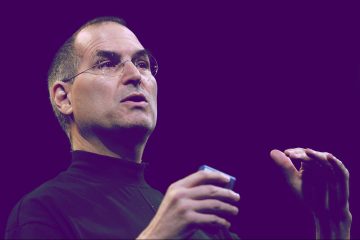
Opinions expressed by Entrepreneur contributors are their own.
What do you want to be when you grow up? People used to say firefighter, teacher or doctor. In a survey, 1 in 4 Gen Z responders said they plan to become social media influencers. What used to be the punchline of Internet careers has quickly become one of the most innovative ways that companies spend their marketing money. Global influence marketing spending is estimated to jump from $29 billion in 2022 to $34 billion in 2023.
Is your business ready for creator partnerships?
Influencers vs Celebrities
I think many people are quick to judge influencers, but they also have difficulty describing what an influencer is. Influencers are anyone who can sway potential buyers by promoting a product or service to their social media followers. Many celebrities, like Kim Kardashian or Lebron James, are, in fact, influencers. They push products on their Instagram or TikToks, but I think there’s a key separation between a true celebrity and an influencer.
Celebrities rise to fame through different avenues of traditional media — acting, sports, singing, etc. Influencers amass their followers by creating their own content and finding their own natural niche along the way. Their fans see their journeys firsthand, starting with that first piece of viral content. Influencer content is much more accessible to fans and followers than normal media.
Influencers can engage with followers through comments, likes, follows, and even direct messages, depending on the social media platform. If you message Kim Kardashian, you’re not getting a response. Influencers are generally viewed as more down-to-earth and approachable. That authenticity may seem odd to someone older, but it goes a long way in the creator economy.
Related: Is the World Becoming Too Cynical for Social Media Influencers?
Shifting digital footprints
Compared to other generations, Gen Z is spending the most time on their phones, accounting for 40% of mobile users and the largest consumers of video content. Younger audiences are making the most connections with influencers, especially on YouTube, TikTok and Instagram. You’d think that no one would have the patience to watch ads, but 58% of young viewers don’t mind watching ads to support their favorite digital personalities.
Watching ads, clicking, and engaging on these digital platforms comes with an interesting benefit for marketers. The subsequent user data makes it easy to know who is doing what, when, where, and why in your product category and target audience. By understanding your potential customer’s digital behavior, you can find out what influencers will be most effective to engage.
Understanding influencers’ data is important as well. Follower numbers aren’t the only data point you must look for. The engagement rate is incredibly important — followers don’t mean anything if they aren’t liking, commenting or sharing. Artificial intelligence and machine learning tools are available for finding the right influencers for you, offered by a range of influencer marketing platforms.
The key isn’t to find the biggest, most popular name on the Internet. In fact, you probably can’t afford them.
Related: 5 Ways to Identify if Influencers Worth Your Brand’s Time and Money
Size doesn’t matter
When people think of the pinnacle of advertising, many minds drift to the prestigious Super Bowl ad slots. This year, ad slots were running for around $7 million, reaching an audience of 115 million viewers. That’s $7 million for a large, broad audience within a small window on a single day, all of which is mostly untrackable. Meanwhile, Youtuber MrBeast averages at least 120 million views per video — and his rate is more affordable.
Honey, the automatic coupon extension, had an ongoing sponsorship with MrBeast. With a deal for $3 million, Honey received more than 1 billion views through MrBeast content spread out over multiple videos. In one video, MrBeast had guests compete for money in a replica of Willy Wonka’s Chocolate Factory — that content still lives online, still links to Honey, and currently has 246 million views.
There’s a scale to the size of influencers and their range. MrBeast is considered a mega influencer, with well over a million followers. There are macro influencers (over 500,000 influencers), medium influencers (closer to 100,000), micro influencers (around 50,000), and nano influencers (less than 10,000). Though they may be smaller in reach, even nano influencers can engage with small communities, especially on a local scale.
Not all influencers can tap into MrBeast’s numbers, but that’s not the point — traditional spray-and-pray advertising has become ineffective and inefficient, even on social media. Sure, you could pay Super Bowl-like money for a single Instagram post by Kim Kardashian for $1.69 million. But you’d be better off having ongoing deals with multiple micro or nano influencers with a targeted campaign. To get the most bang for your buck for your business, no matter what size you are, you need to find the right influencers and the right platform to tap into your potential customer base.
Related: How Your Business Can Benefit From Micro-Influencer Marketing
Time to influence
Going into an influencer marketing campaign, you need to set goals. Is this for brand awareness or search rankings? What are your KPIs, and what is your expected ROI? When it comes time to work with an influencer, you really need to understand: what are you selling?
Products that are visually engaging and tangible are best suited for platforms such as TikTok or Instagram, especially if you’re angling for a younger audience. That doesn’t mean older business professionals don’t interact with influencers. If you’re a B2B company offering sales optimization services, having a TikTok influencer plugging your product to younger people won’t be helpful, but a LinkedIn influencer might.
With a diversity of niches and routes of engagement, data will point you toward the right influencer for the job. When making that decision, trust your gut: do they feel authentic? Do you like the content they make? With smaller budgets, you don’t have to commit to extended contracts, and with the right data, you can find the influencers you do want to continue working with.
What’s next?
The creator economy and influencers will continue to innovate in the coming years. With that comes the rise of new independent agencies and holding companies focusing on micro-influencers.
As the industry grows, so does the technology. Artificial intelligence and data-driven campaigns will continue to expand businesses’ abilities to hone in on audiences and monitor engagement. As live shopping continues to spread to the U.S., influencers who succeed in engaging with customers on live shopping streams will become more effective and more valuable.
Social media platforms will continue to develop, so we can only watch as influencers adapt to the technology. Whether virtual reality or the metaverse, influencers will find new ways to connect with audiences and customers.





